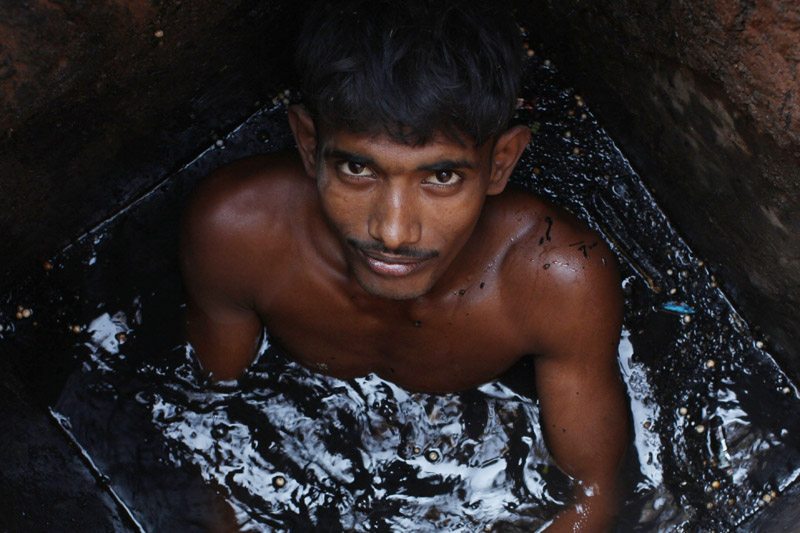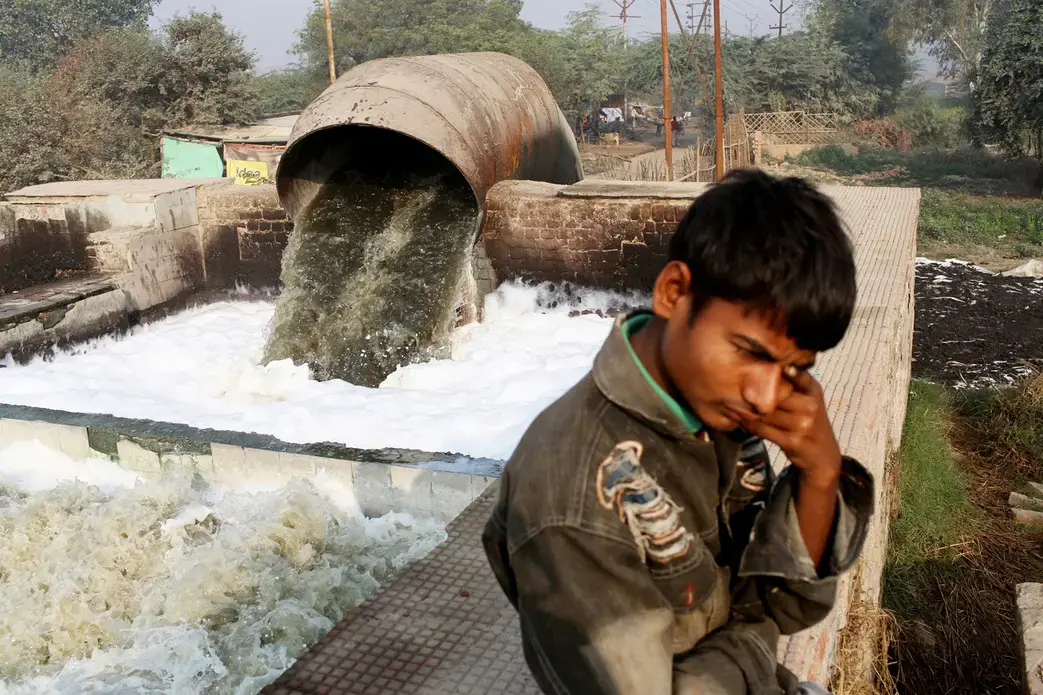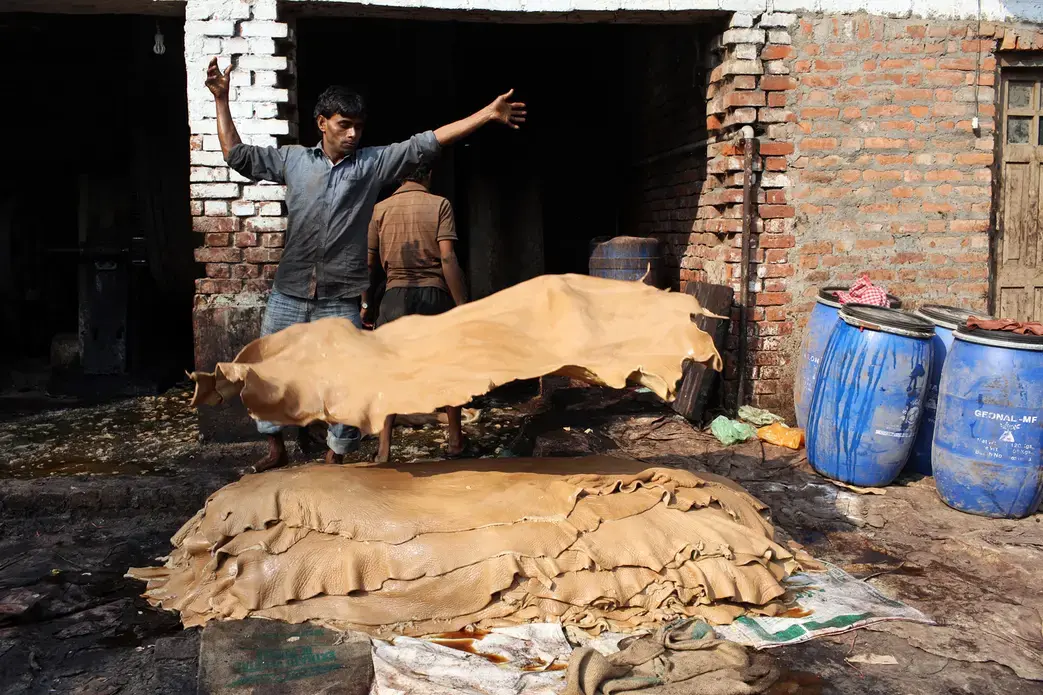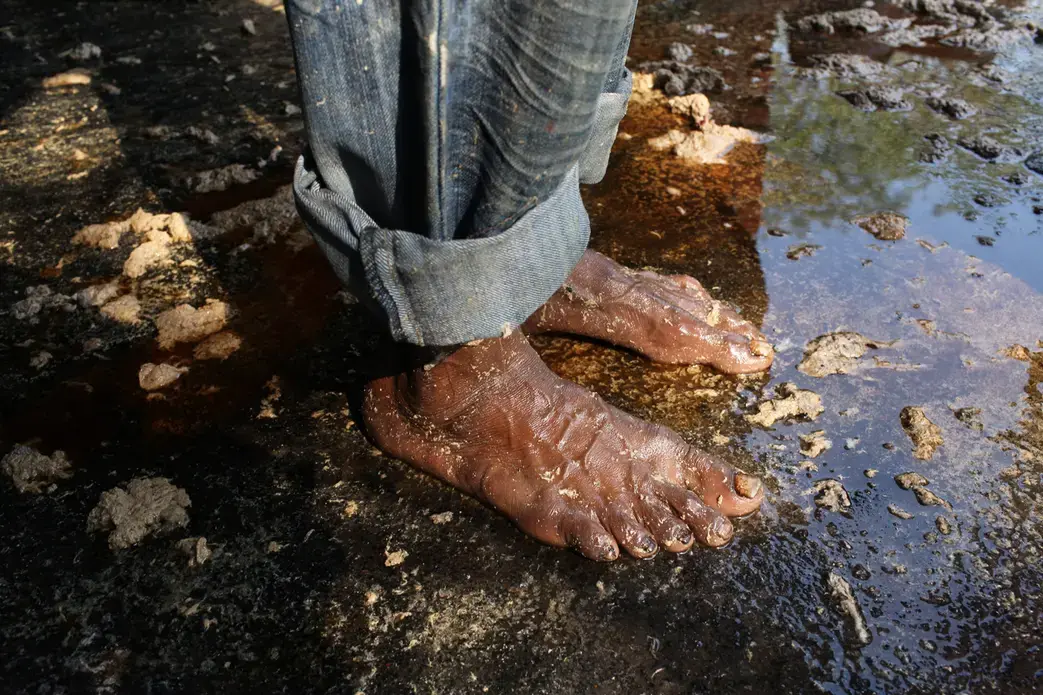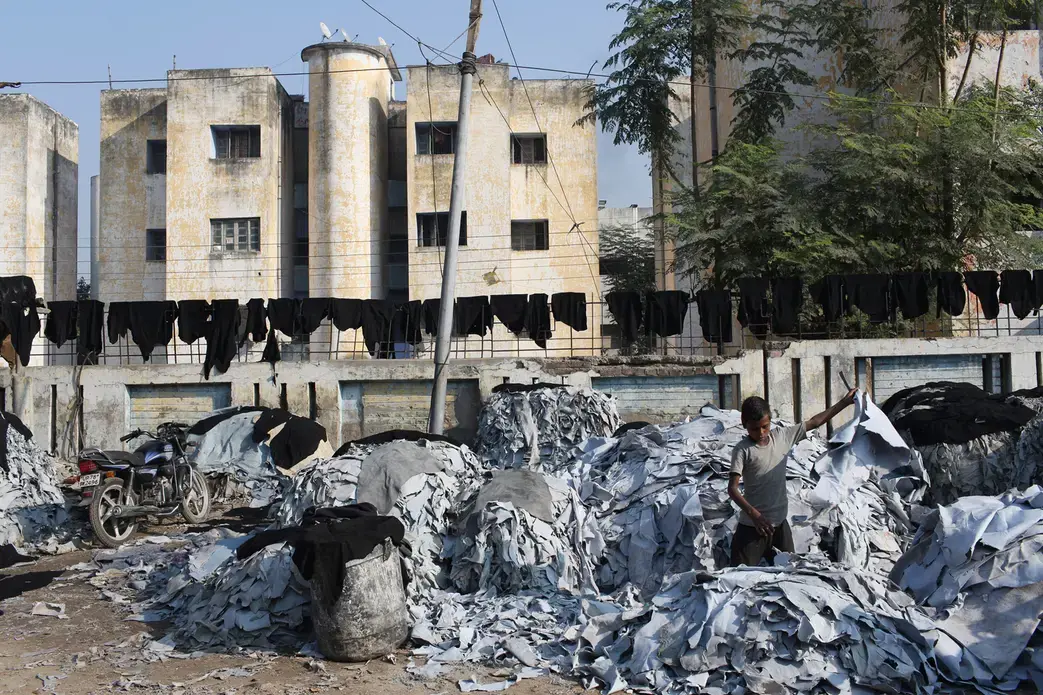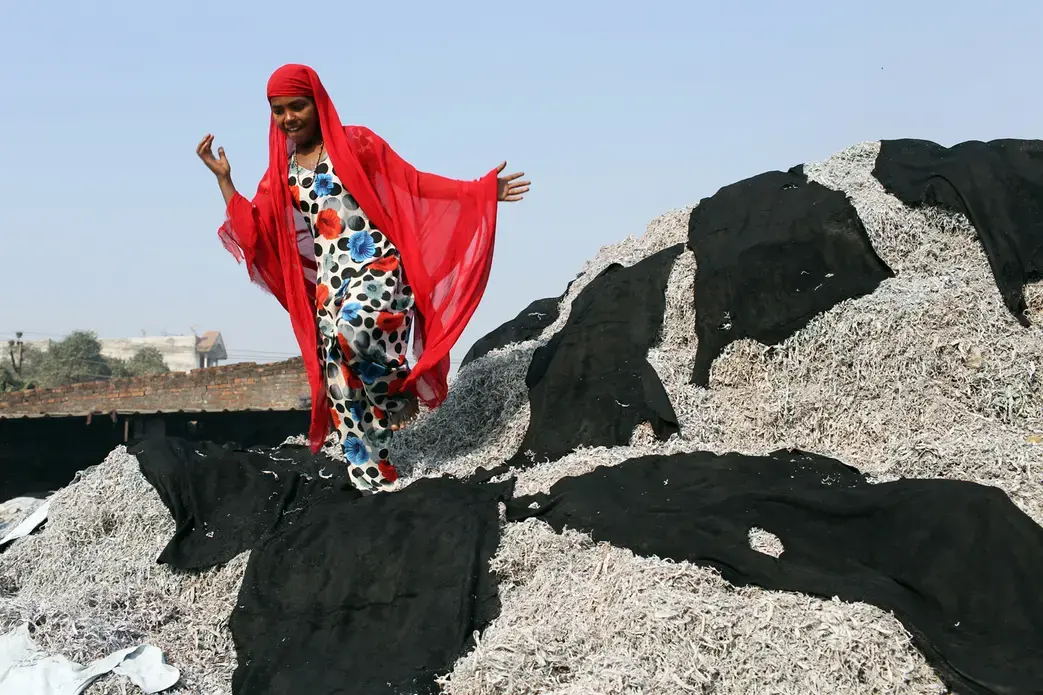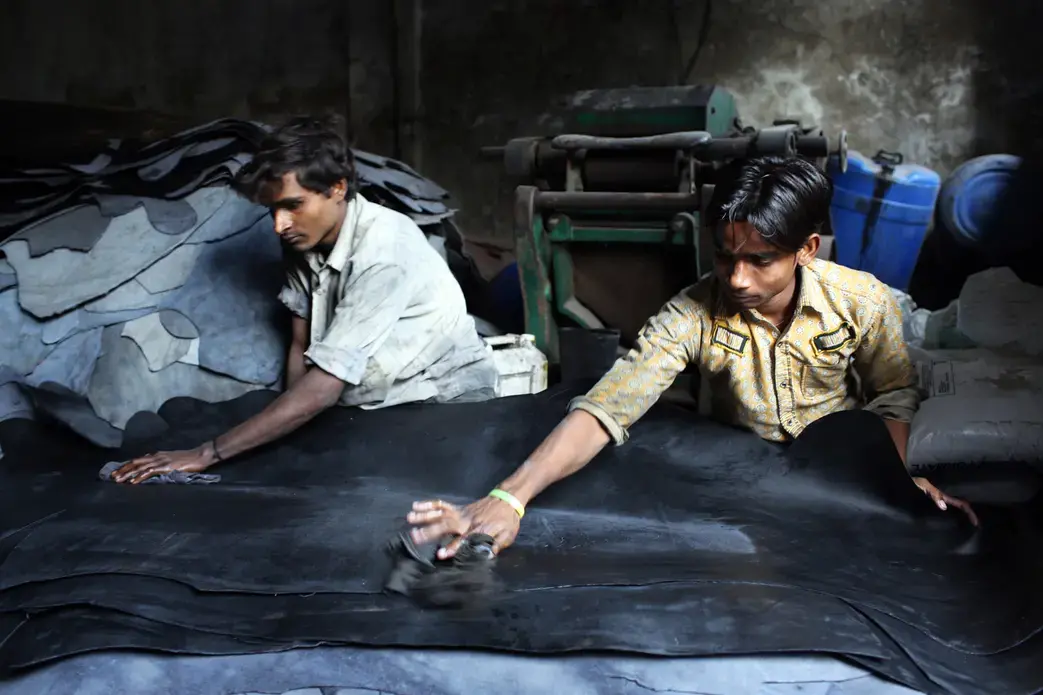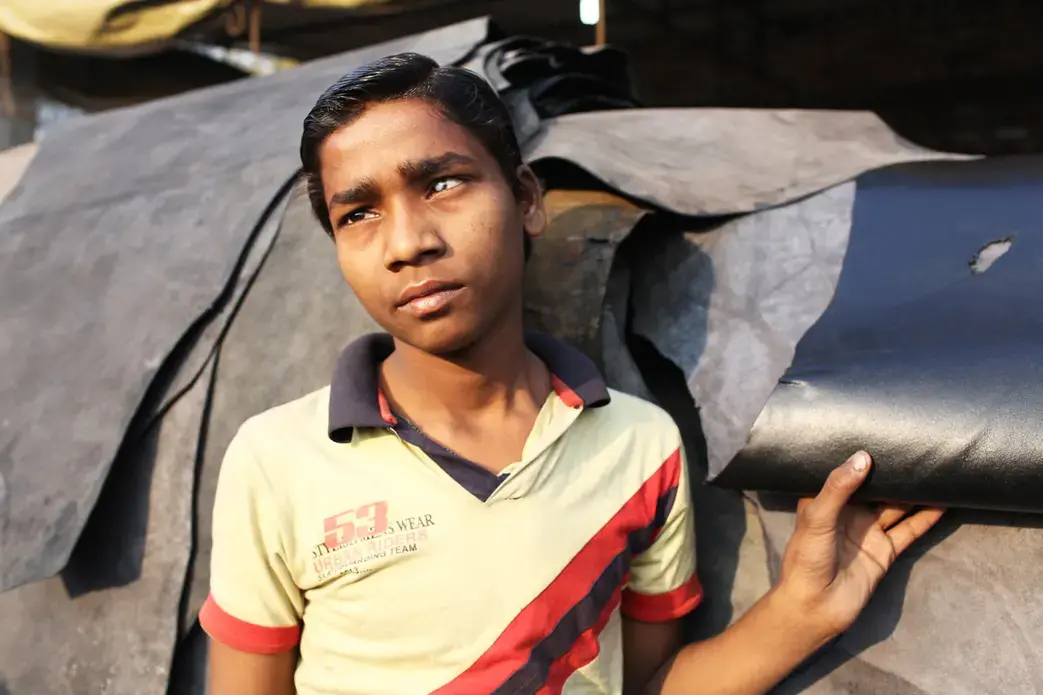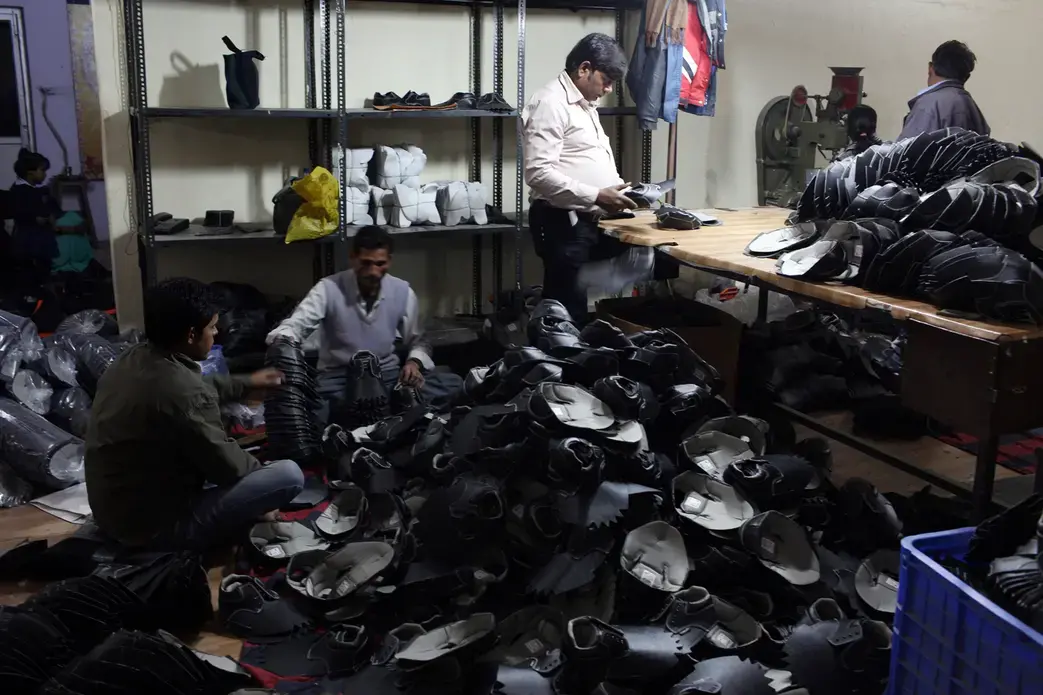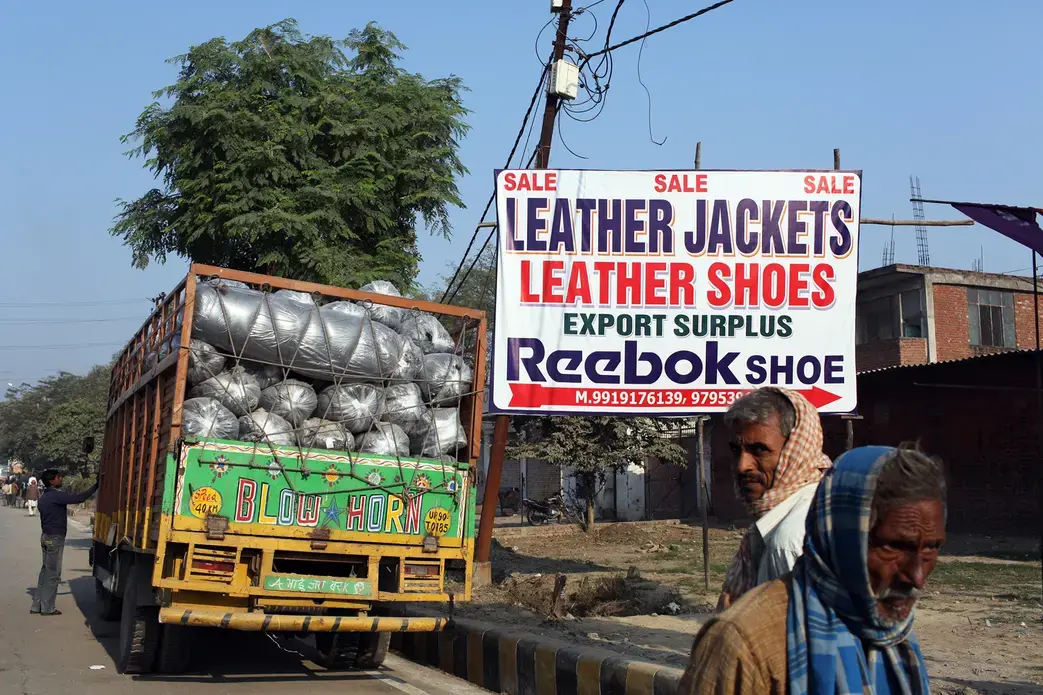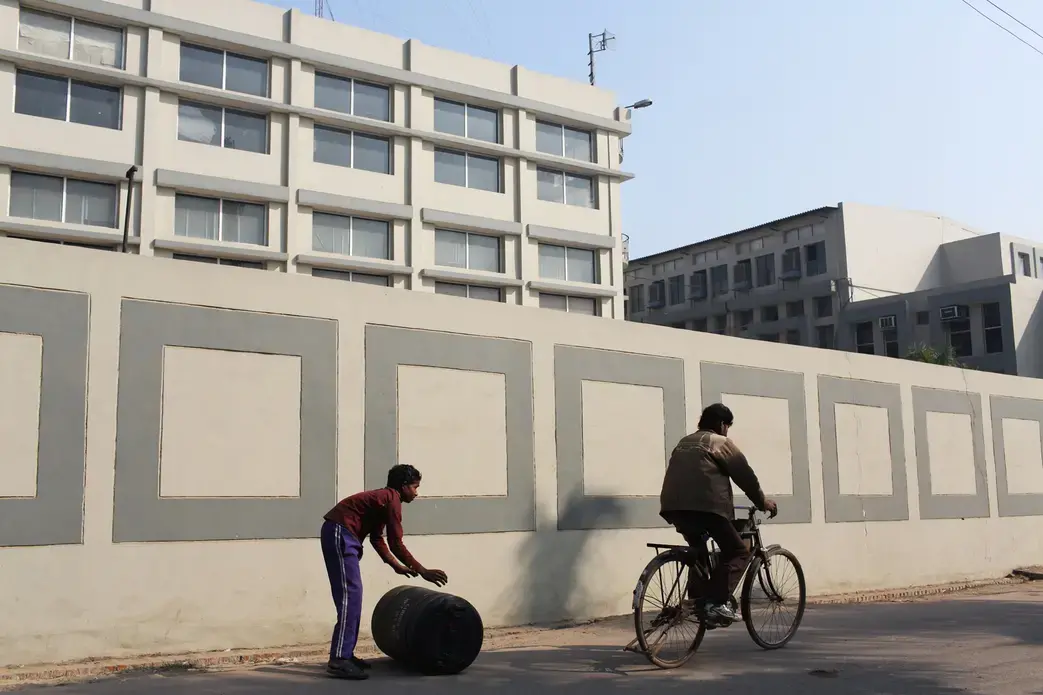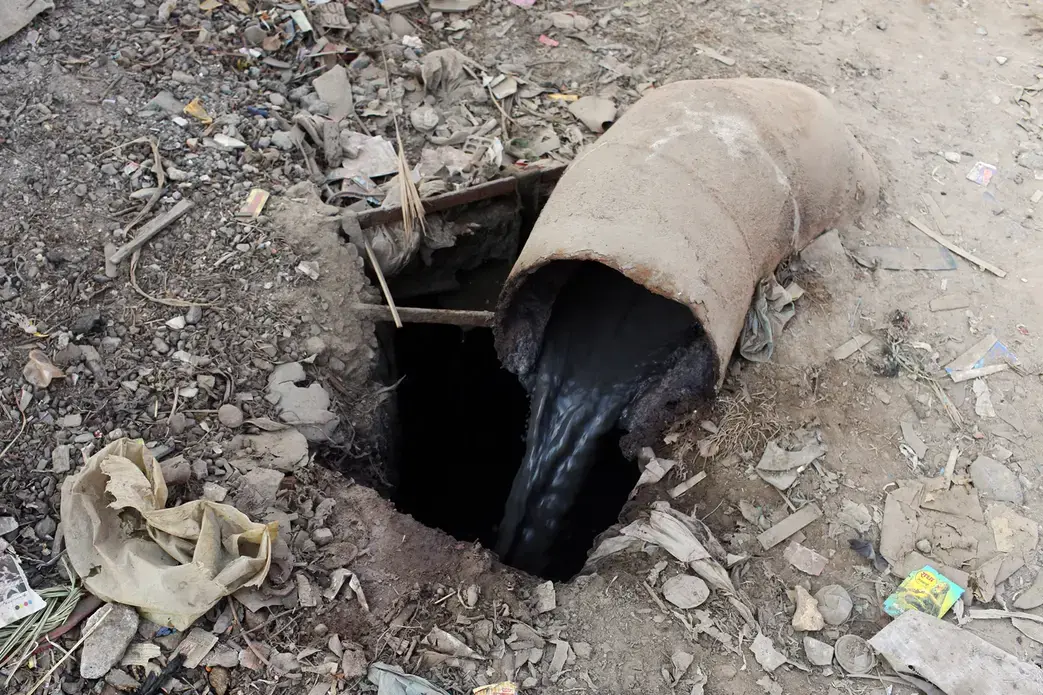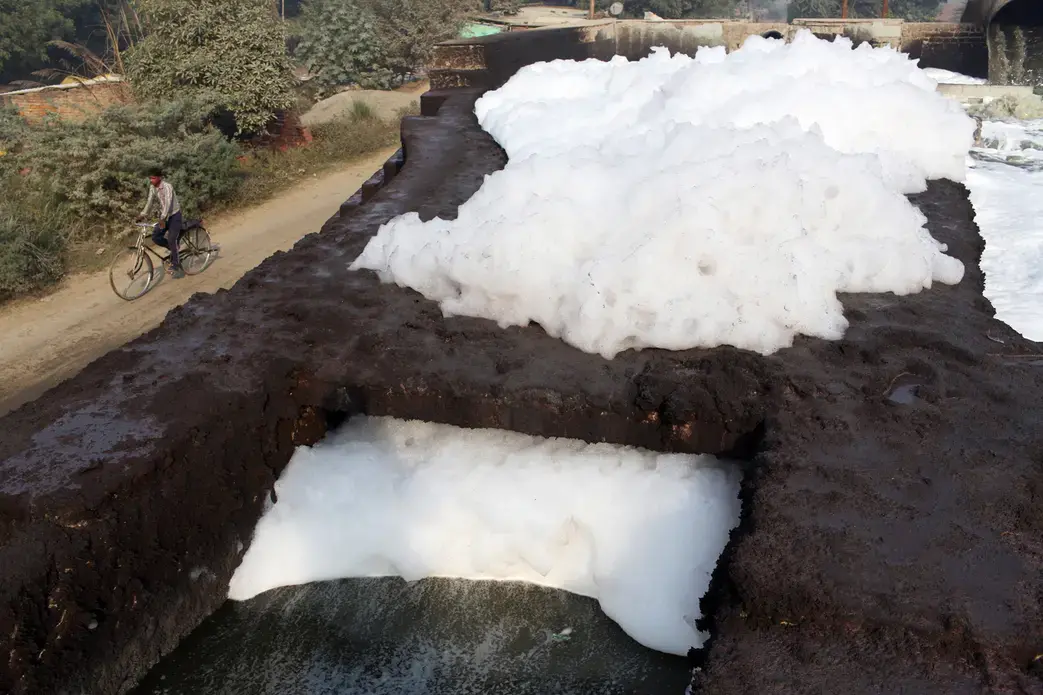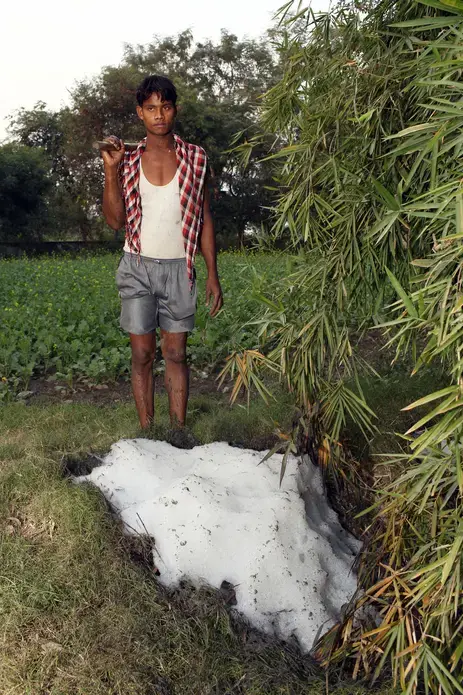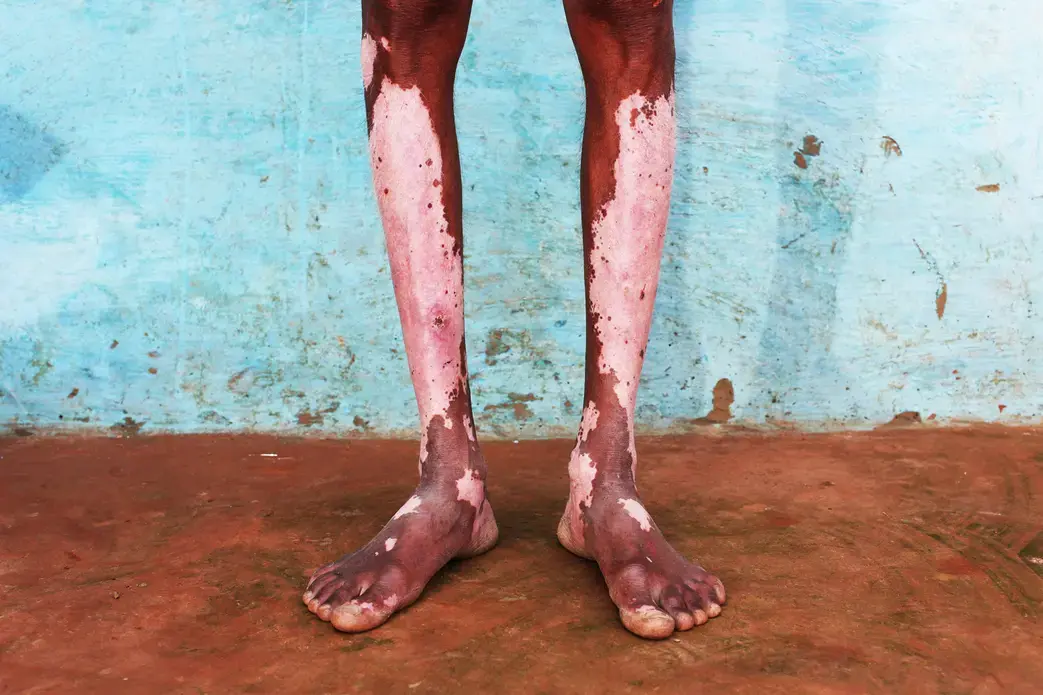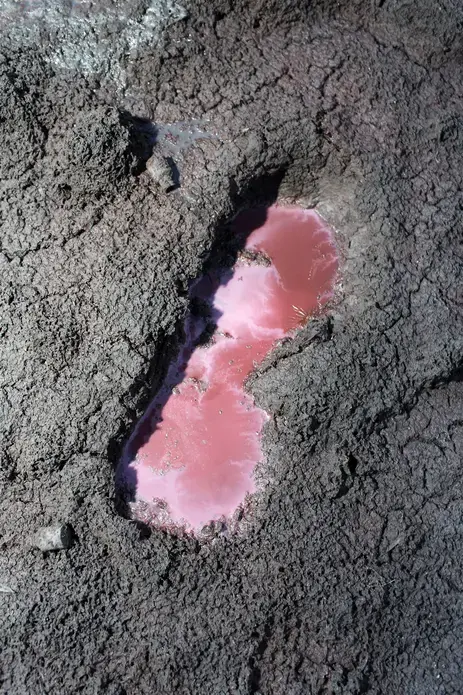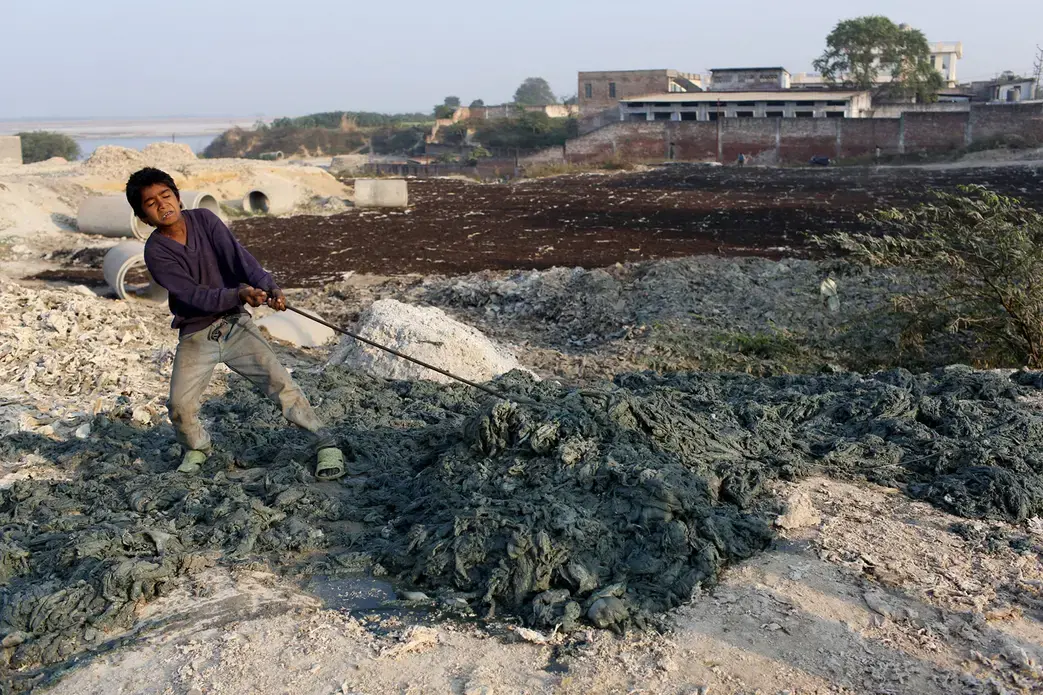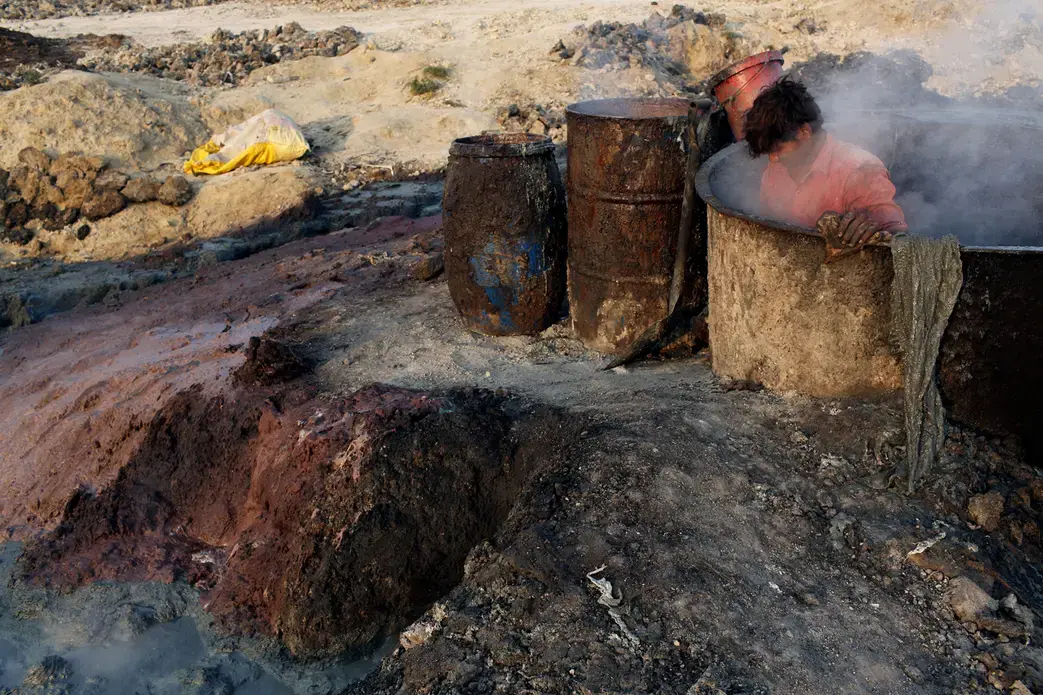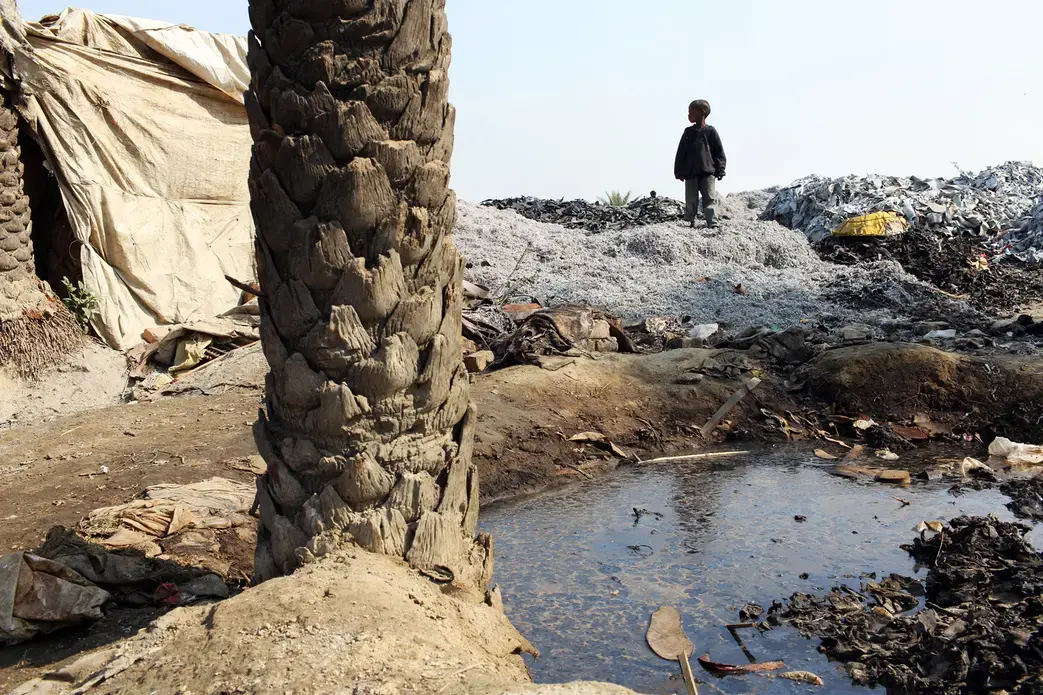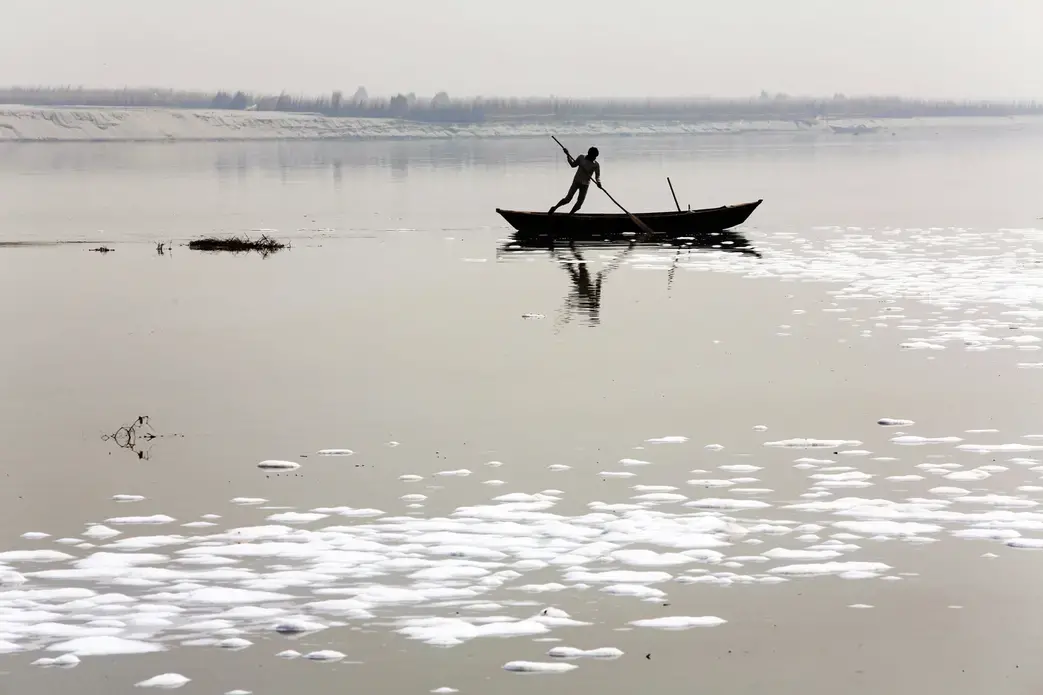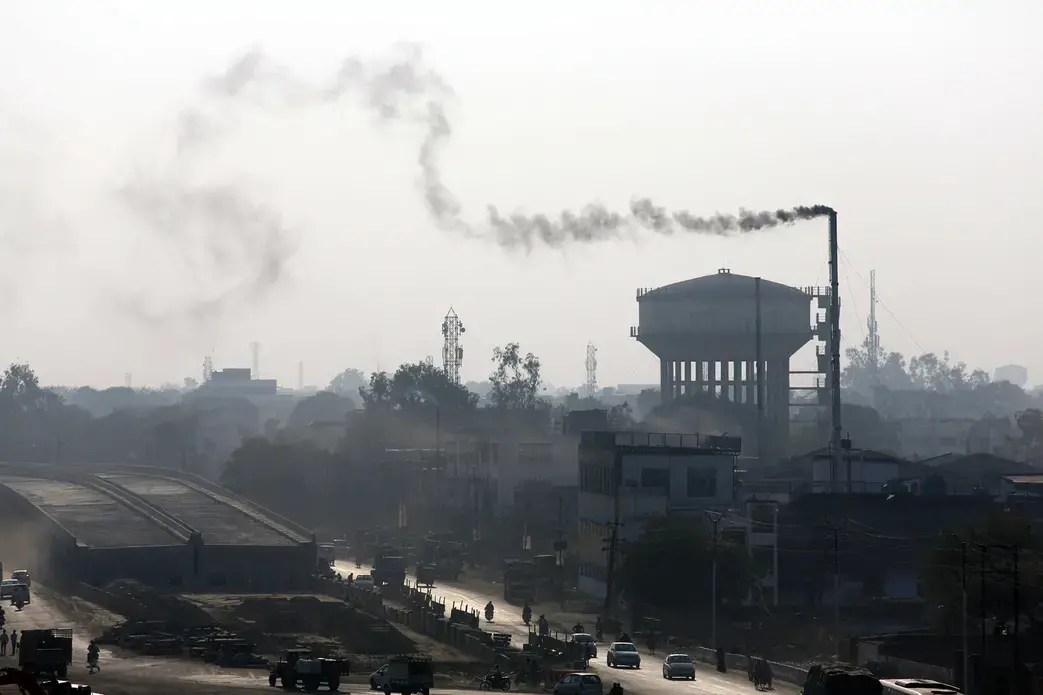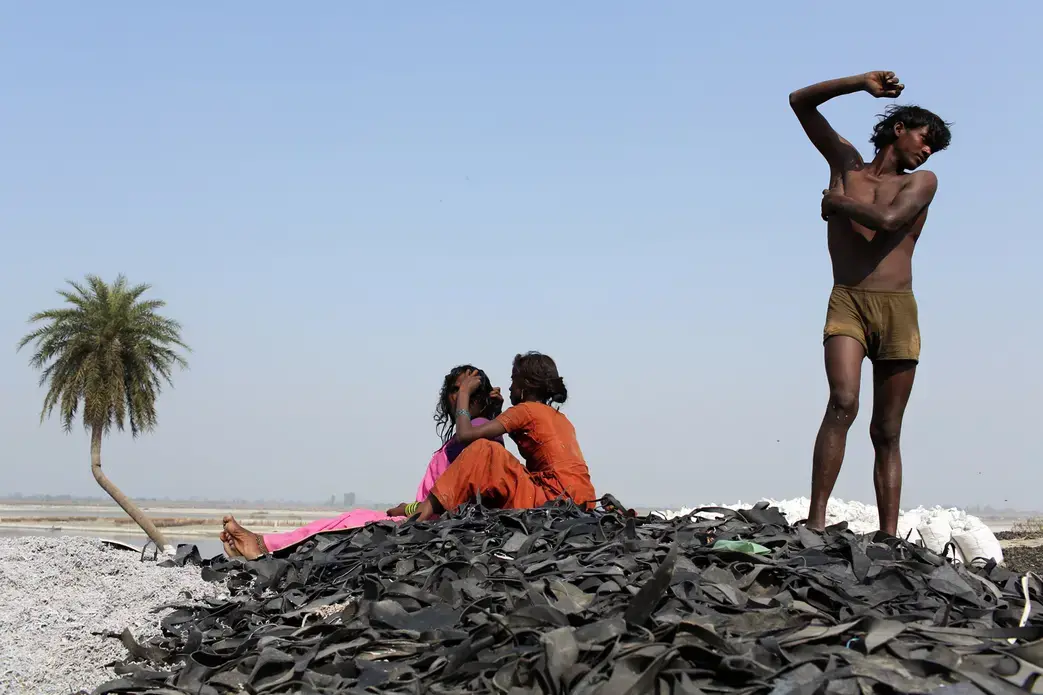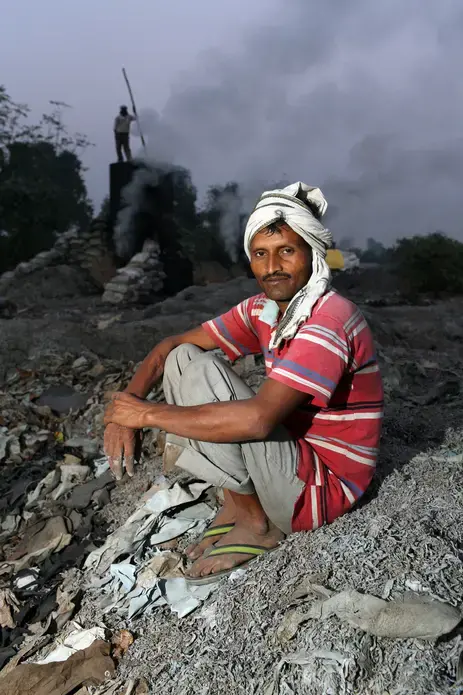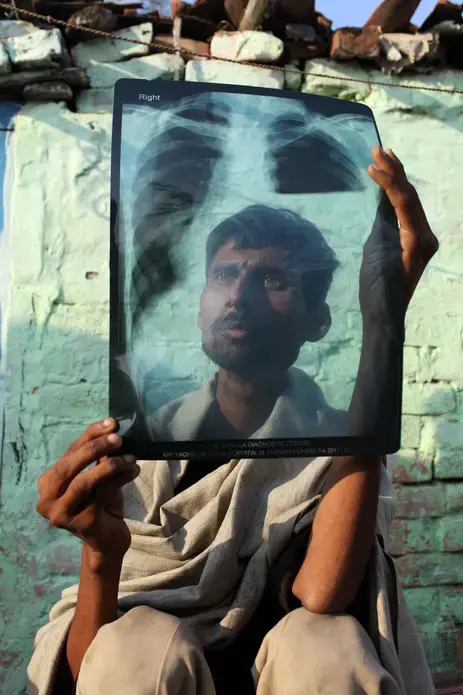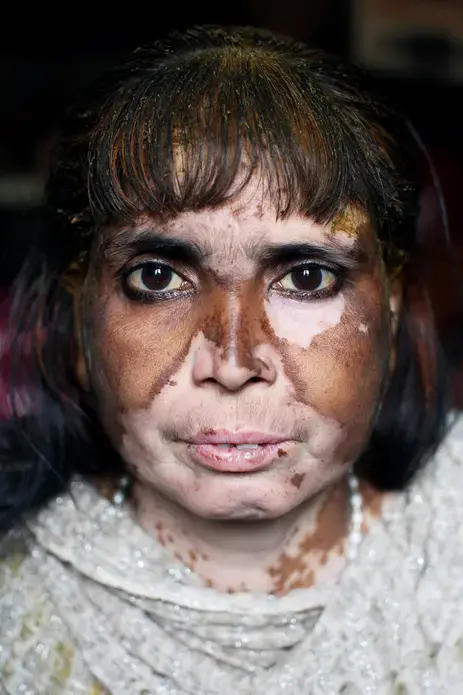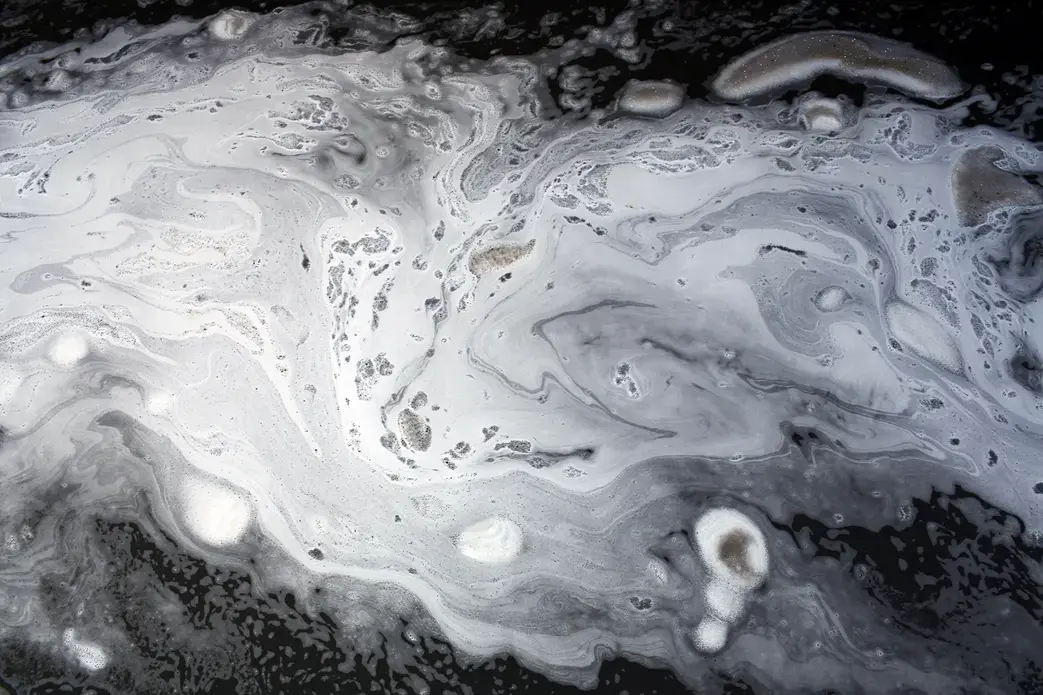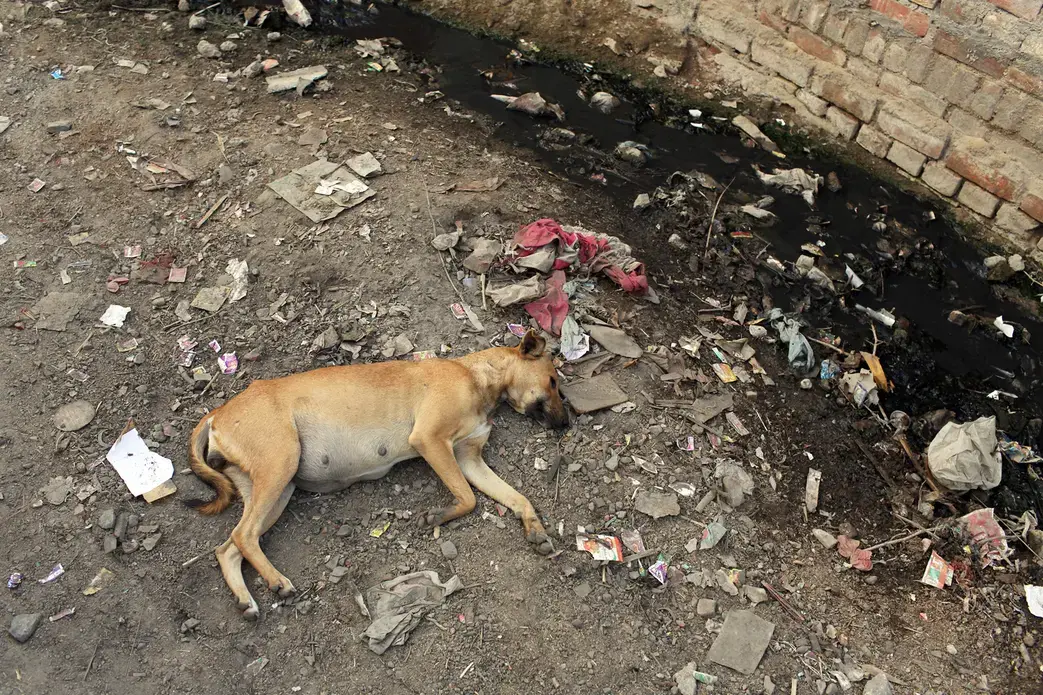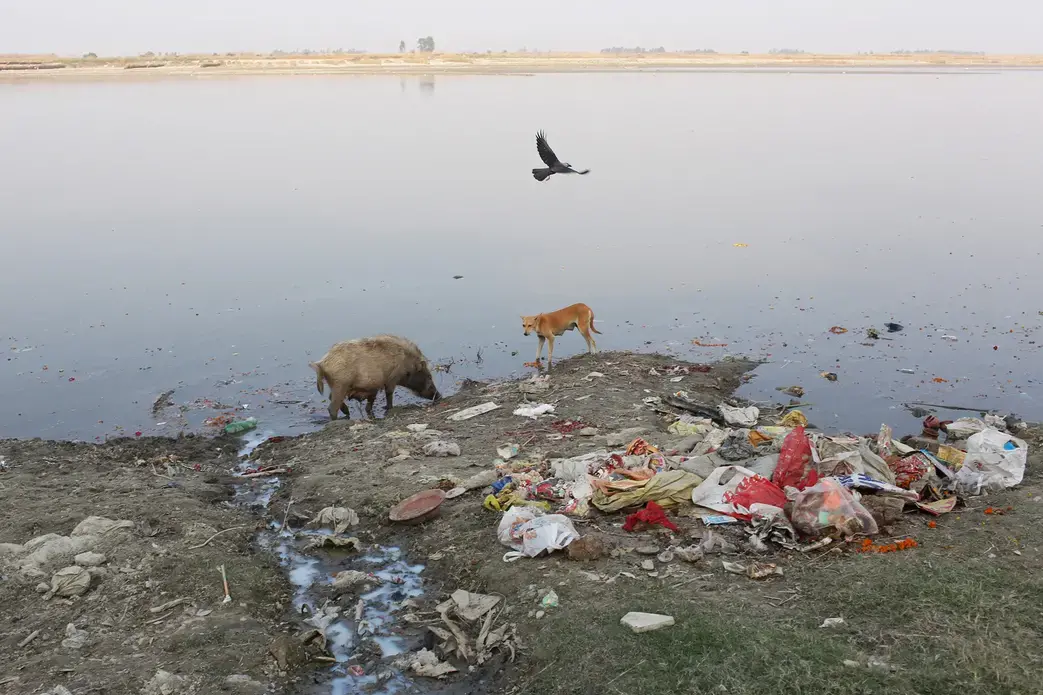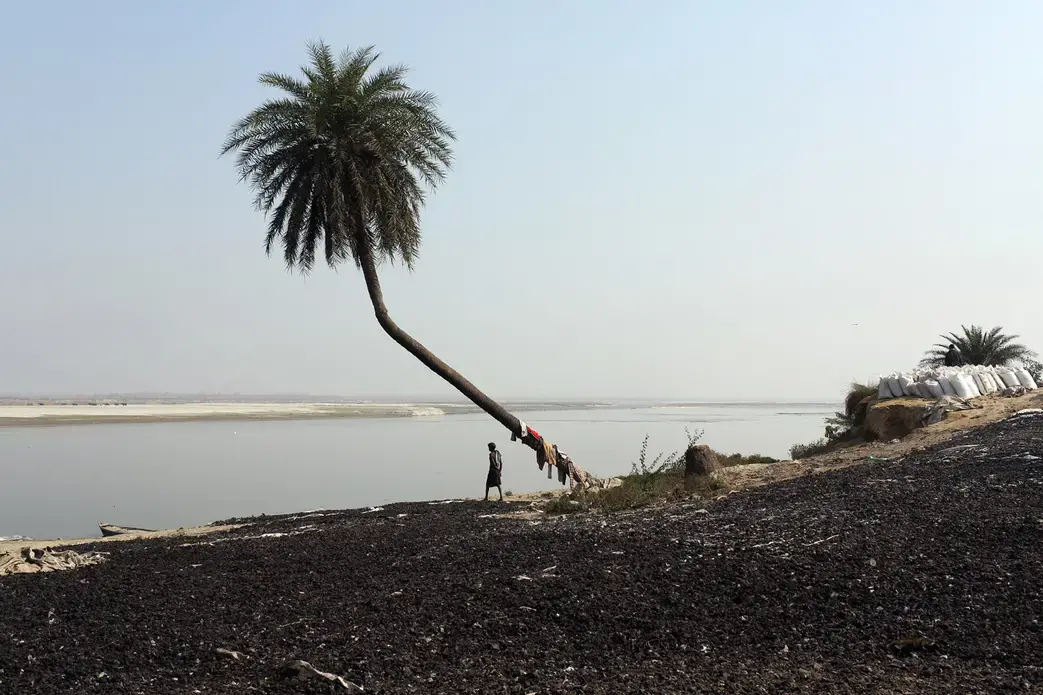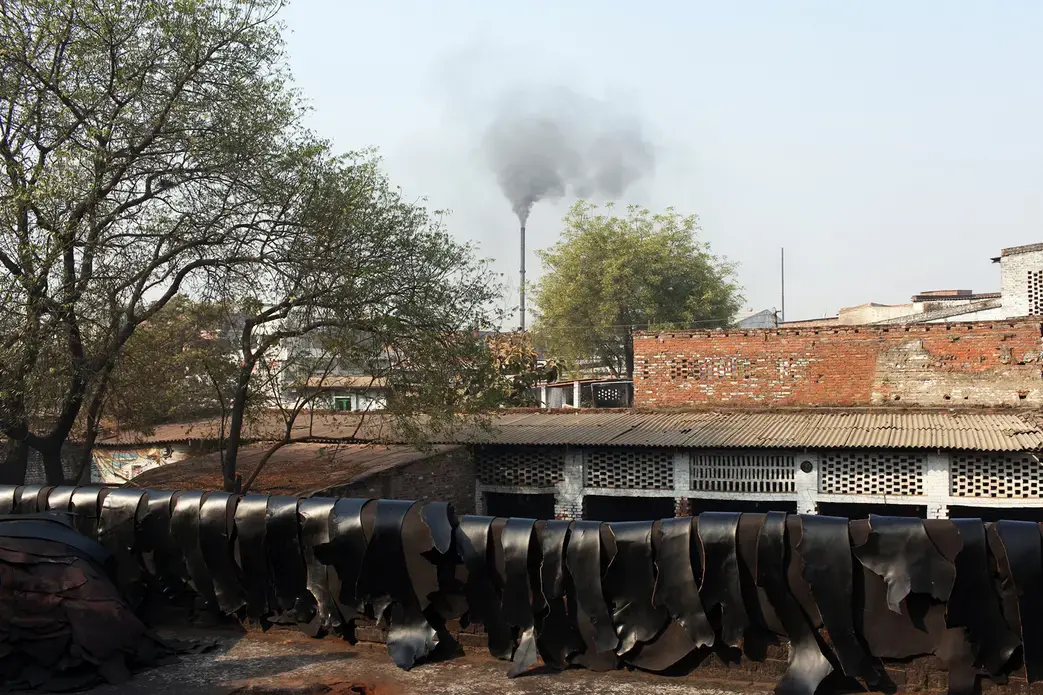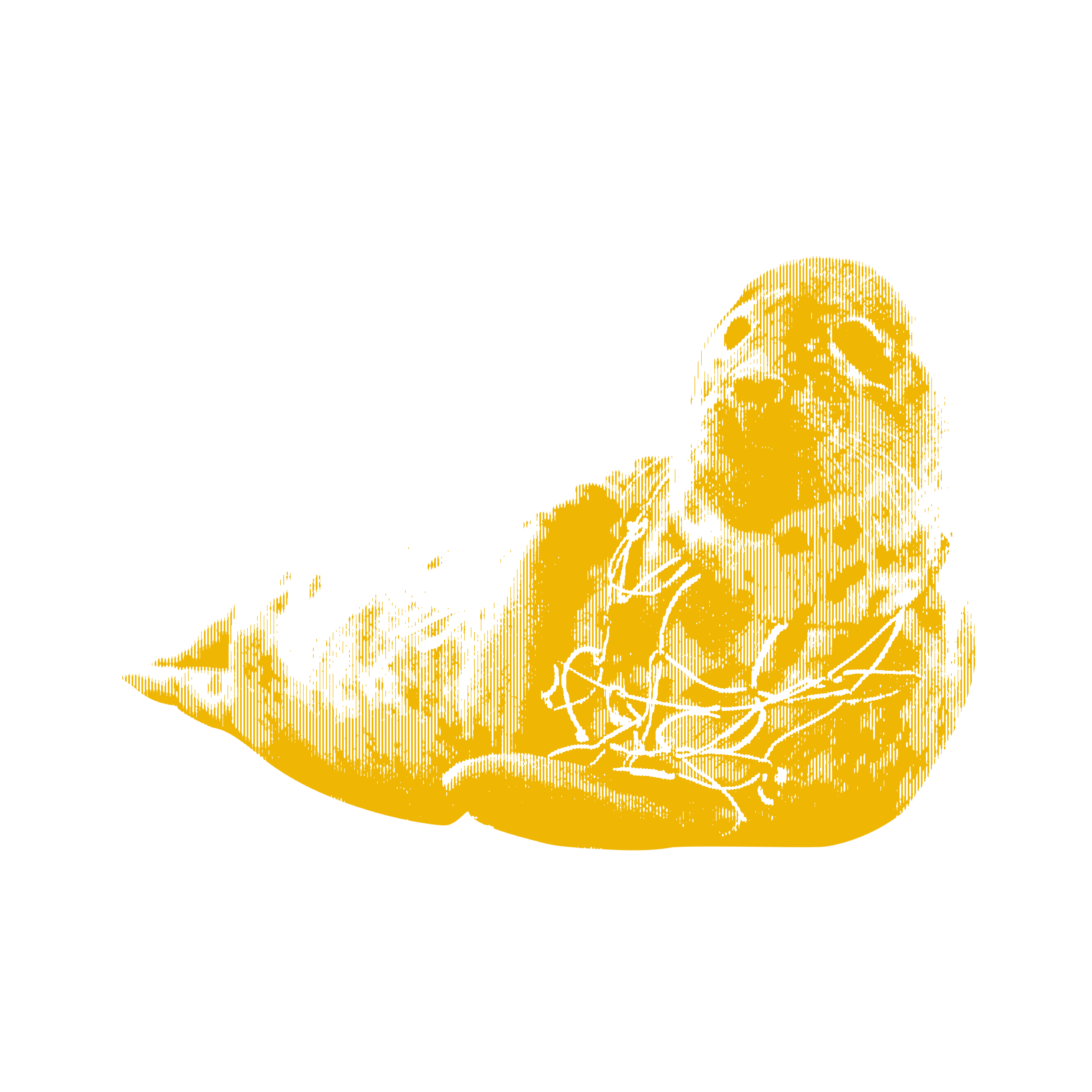"The bubbles which you see are contaminated with chromium, and it is very poisonous."
Standing next to a field of wilted crops near his small village of Payundee, Sonalal Yadav carefully hops over a drainage canal, which is overflowing with white foam.
An acrid stench fills the air as the water below is churned up and funneled through the small channels onto nearby farmland. On its way, vegetation that hangs in the water is beginning to turn a dark brown color, and some plants are completely black.
"This water that you see comes from the tanneries. It goes to the treatment plant and then from the canal, it comes to the fields," explained Yadev, who is president of the area's local farmers community. "We were called the 'Kings of Roses.' Now, they have totally vanished. Here vegetables have also gone very bad. The vegetables have all become poisonous."
These tainted fields lie on the outskirts of Kanpur, a small city of some 2.5 million inhabitants, residing on the banks of India's holiest river, the Ganges. Along these banks, an ecological and health crisis has slowly developed, now engulfing a city that has gained notoriety in recent decades for the rise of its most successful export, leather.
Kanpur is home to more than 300 tanneries, which treat various animals hides and skins, manufacturing them into a wide array of leather products including shoes, clothes, belts and bags.
The city's industry has become so successful that it has recently risen to become the country's leading leather exporter, with more than 90 percent of its products destined for markets in Europe and the United States.
Many of the city's tanneries, small, medium and large-scale, are located in the small area of Jajmau, a predominantly Muslim area just a few kilometers east of the city center.
The neighborhood teems with life, and tannery workers and residents mingle in the streets. Just before sunset seems to be the busiest time, with residents crossing the narrow dusty streets, dodging trucks filled with hides and leather products.
Saida, one of the tannery workers, lives on the edge of Jajmau, near the Ganges River, which runs just meters away from her door. From her small, one-room home, she peeks out from behind a colorful curtain at her door, temporarily revealing a glimpse of her face, a dappled mix of brown and white skin.
"Most of the tannery water is dumped, and it has very strong chemicals," Saida explained. "That is the water that we drink. Because it is such a bad environment, this is why all the diseases are here."
She is one of many workers and locals who suffer from a serious skin condition that has turned her brown skin white. It's a condition that is believed to have been brought about by having contact with the toxic waste water from local tanneries.
She is not alone in her affliction. In her small community, there are people with similar skin conditions, former workers suffering from tuberculosis, residents suffering from blindness, gastrointestinal issues and children born with severe mental and physical disabilities.
In 2008, a study by scientists at the Indian Institute of Toxicology Research found that tannery workers had double the risk of morbidity when compared to control groups. The main findings suggested that increased exposure to leather dust, which contains high levels of chromium, was responsible for the significantly higher rates of morbidity. Carcinogenic compounds and a variety of highly toxic chemicals were found in the tanning process.
Separate studies have also revealed high levels of chromium in local soil and water, which is evidence that this dangerous chemical — in its industrial form — enters and accumulates in the food chain.
"We did a study with the Blacksmith Institute, in collaboration with the central pollution control board. We found that the groundwater was very severely contaminated from Chromium VI," said Satish Sinha, associate director at the Delhi-based NGO, Toxics Link.
"It is a sign that tells us that the groundwater contamination is there because of the Chromium VI, and people are drinking that water, which is very, very serious," Sinha explained. "Chromium can be highly toxic to humans."
As the tanneries' chimneys belch out dark smoke into the air above Jajmau, small drainage channels line the streets, carrying liquids of myriad colors, from light blue to jet black, untreated effluent which has escaped from the tanneries. Laced with highly toxic chemicals, it passes through many communities on its way to the Ganges River just a little further downstream.
Following the official waste water channels out of town and away from the tanneries, it makes its way to a common effluent treatment plant on the outskirts of the city. Designed to process the highly toxic water, it receives upwards of 40 million liters per day. Its failings have been a source of despair for locals, and it's estimated that only 20 percent of the water received from tanneries is properly treated.
"The common effluent treatment plant doesn't work and doesn't function for various reasons," said Toxics Link's Sinha. "Either the plant is down or [there's] a sudden malfunction, there is no electricity, or it is running below capacity. So there are multiple reasons why a plant doesn't work perfectly, and so all the water is being discharged into the agricultural land, and all the farmers are using this for agricultural purposes."
Back in the fields, Yadav was exasperated. "They said that this water would be treated in such a way that you would find big fish surviving in it," he said. "But now you can see the bubbles in this water. Even the grass vanishes!"
For many of Yadav's fellow villagers, they have no choice but to use the water and allow it to enter their fields. The environmental and health effects have been nothing short of catastrophic for these helpless villagers, who have to wade through the water to irrigate their fields and watch helplessly as the toxins accumulate in their fields, soil and ultimately their bodies.
"What can I say about the health effects? We are getting ill. Sometimes we have bad legs and skin rashes. That is a problem with the water. Always feeling ill. There are also many diseases," explained Shivlal Nishad, a fellow farmer who stares out across his field which is being irrigated with foam-laced water. "What should I say about the crops? You see the small plants. If the water is full, the small plants don't survive. They don't get bigger. Day by day, they vanish."
Just a few hundred meters away from Nishad's field, black smoke emerges above the tree-line. It emanates from the nearby chromium waste fields, which process much of the tannery waste. Burning discarded leather trimmings produces highly poisonous smoke that filters through the air, wafting towards his village. The trimmings, once dried, are ultimately used for fertilizer and even chicken feed. Still laced with chromium and other chemicals from the tanning process, this smoke acts as another vector by which toxins are entering the food chain.
"What to say? Why they are not helping? Nobody is helping us. Not the government, not even the politicians. So many politicians but nobody is listening," laments Nishad, as he wades deeper into the water which has now engulfed his field.
Excess water that escapes the fields runs downhill and eventually finds its way into the most important waterway that connects both the urban and rural communities, the Ganges. Even India's holiest river is not immune to the severe levels of pollution in the city.
"We are making the Ganges water black," said Arun Puree Chaitnya, or Baba Gee, as he is known to his devout followers at his ashram on the banks of the Ganges River. "In Jajmau, Kanpur, due to the leather industry, the Ganga is mostly polluted. From the Himalayas to the Bay of Bengal, the most damaged part of the Ganges water is in Kanpur. My heart cries when I see the pollution, but the problem is that the government sitting in power doesn't want to do anything."
Baba Gee, a Hindu holy man, has been involved in environmental awareness campaigns since his teenage years, encouraging local people to come together to protect the country's most important waterway. It's a message that is proving difficult to get through to those in higher levels, however.
"We have said to the government, 'Please seriously work for the benefit of the Ganges,'" he said. "The government has many schemes, but on the ground level, it is fruitless."
In Delhi, Chandra Bhushan, deputy director general of the Center for Science and Environment, believes one of the main problems lies with the government's tradeoff between employment and the environment. "The Indian government and the supreme court of India have also looked at the issue of Kanpur tanneries," he said. "Have they improved in Kanpur? A little bit, in 20 years. Now you have a few big companies that are doing better than they were doing before, but the major problem of tannery pollution comes from small and medium-scale industries."
The jobs provided by these businesses make it difficult to regulate them, Bhushan said. "These are small to medium-scale companies generating a lot of employment, [with] a lot of political support for them and it has been difficult to close down these industries," he explained. "Some of them even operate illegally in those areas. So it has been a difficult issue for India. Nevertheless, I think it's high time: We will now have to take concrete actions — either we need to upgrade those industries now, put in money from the central purse and upgrade those industries, or ask them to shut down."
With increasing demand from the West and rising affluence in the East, the leather industry shows little sign of slowing down. The future of Kanpur's most vulnerable residents and the state of the local Ganges ecology seems perilous.
What will happen if nothing changes in Kanpur? "I think it will be asking for disaster. The time bomb is ticking," Sinha said. "The moment we get a sense of the data, then we will realize it is too late. The cost of it is going to be very, very expensive. It's going to be very costly for the state and for the health concerns that people have. It is going to be phenomenal. And I don't think you can put the clock back after that."


